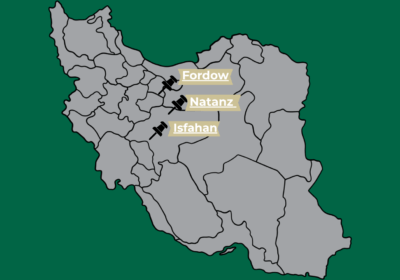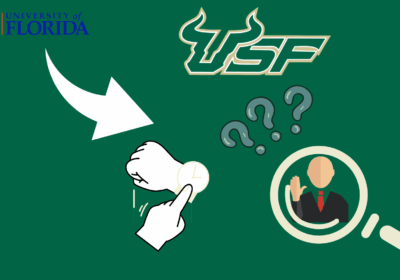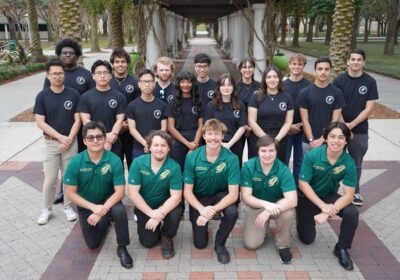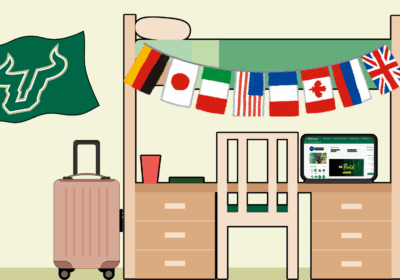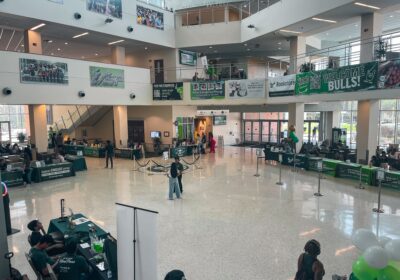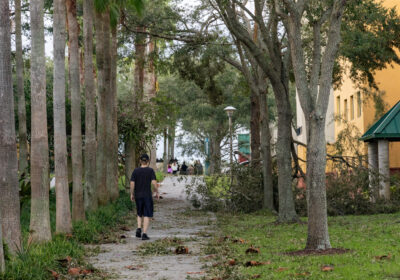Degree programs audited for productivity
As legislative funding pressures have increasingly weighed upon the university in recent years, so have pressures to become more efficient “in a climate of diminishing resources,” USF Provost Ralph Wilcox said.
Over the past five years, USF has terminated five degree programs, while concurrently adding new programs, he said to a Board of Trustees workgroup.
But now, a system-wide degree productivity audit will force faculty and administrators to take a closer look at programs being offered at USF.
While a similar audit was conducted earlier this year by the State University System’s (SUS) Council of Academic Vice Presidents for the entire SUS, which identified 21 USF degree programs as performing below their threshold for productivity, USF conducted a system-wide audit with stricter standards. The audit took the average number of degrees awarded each year over a five-year period for each of the 345 degree programs USF offers.
Eighty-four degrees were found to be below USF’s threshold of productivity — less than 12 degrees awarded at the bachelor’s level, eight at the master’s and five at the doctoral — 65 of which, were from the Tampa campus.
“We believe by setting a higher threshold, we are providing for an early warning system across the USF system and really establishing a proactive best practice so we don’t get into a situation where all of a sudden a program, or a campus or a college falls off the cliff and awards no degrees,” Wilcox said to the workgroup. “We can recognize any trends, upwards (or) downwards, in the prior years.”
After the audit results were collected, college deans were asked to respond with their plans for underperforming programs — they could recommend terminating a program, admit no new students and “teach-out” a program, create a plan of corrective action, find a way to reorganize or provide joint delivery or continue maintaining the delivery of the program as is.
“There are some very good reasons for simply saying a program is going to maintain,” Wilcox said. “One, that a program is identified as a critical needs program by the state, even if productivity is falling short. Some of them are brand new programs that don’t have five-year histories.”
Special needs education for mental and physical disabilities, for example, which were identified as below threshold, have been identified by the state as having a critical shortage.
Of the 84 programs identified, two — liberal arts & sciences and technology education — have been recommended for termination. Neither program had students enrolled in them.
Nine programs were recommended to be placed on an inactive teach-out status. Two (computer information sciences and general engineering) are on the Tampa campus, four (special education, English education, geography and mass communication) are on the St. Petersburg campus and three (special education at the undergraduate and graduate levels and early childhood education) are on the Sarasota-Manatee campus.
The remaining programs will undergo a process of close evaluation by a committee headed by Vice Provost Graham Tobin.
Some programs will be asked to “enhance their marketing and promotional programs” while others will be asked to “reallocate more faculty resources,” a budgetary responsibility for deans, Wilcox said, and others will be asked to look at “curricular changes.”
But some programs, Wilcox said, might not have their productivity reflected in the number of degrees awarded. The English department, he said, for example, teaches courses to almost every freshman at the university, but the number of degrees awarded to English majors may not necessarily reflect that level of productivity.
“Simply measuring degree productivity may not tell the full story,” he said.
A member of the Faculty Senate asked Wilcox last week if job placement was being taken into account as a part of the audit.
“Law schools are being sued right and left because of misrepresenting themselves for what the job market is,” he said. “… Degrees might be wonderful, but if you send a student out there and there are no jobs, why are we offering these programs?”
Wilcox said, though currently only degrees are being evaluated, more may soon come into the picture.
“We’re not asking those questions yet,” he said. “…That’s not to say that those questions will not be raised at a later time.”
Wilcox said the review process will take time and will need input from faculty, students, administrators and even “the market.”
Student body president and a member of the Board of Trustees Brian Goff asked why USF had a fewer number of below-level productivity courses than the University of Florida and Florida State University. He asked if as USF grew, if they too could expect to see an increased number of programs below-productivity.
“My gut tells me that because those two institutions are significantly better funded than the University of South Florida, or for that matter any other state university in Florida, they can afford to be less efficient than USF,” Wilcox said. “So I’m actually quite pleased to see this data because it underscores the seriousness of our resource allocations.”


